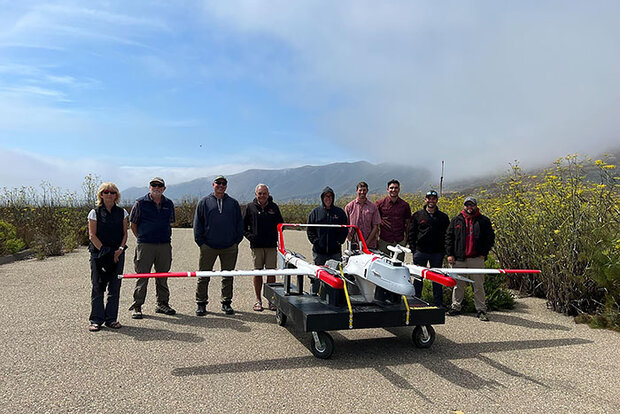NOAA explores how uncrewed aircraft can improve aerosol and cloud measurements

NOAA and Overwatch Aero personnel gather around the FVR-90 uncrewed aircraft before a flight at Vandenberg Space Force Base. Credit: Tina Fuss/NOAA

NOAA and Overwatch Aero personnel gather around the FVR-90 uncrewed aircraft before a flight at Vandenberg Space Force Base. Credit: Tina Fuss/NOAA
A team of NOAA and industry uncrewed aircraft professionals conducted flight operations at Vandenberg Space Force Base in Lompoc, California, to expand and test the use of uncrewed aircraft to gather critical observational data. During the flight operations, NOAA’s Pacific Marine Environmental Lab (PMEL), the Uncrewed Aircraft Systems Division of NOAA's Uncrewed Systems Operations Center, and their industry partner Overwatch Aero tested PMEL’s science payloads onboard the hybrid FVR-90 Vertical Take Off and Landing - Fixed Wing uncrewed aircraft. The payloads, aptly named Clear Sky and Cloudy Sky, measure aerosol and cloud properties and the impact of aerosols on the Earth’s radiation budget.
These payloads can help NOAA address many areas of interest such as air quality, the role of aerosols in Earth’s energy budget, and atmospheric interactions. Aerosols are fine particles that are produced by waves breaking at the ocean surface (sea spray), phytoplankton (sulfate aerosol), sandstorms (dust), and combustion (burning of fossil fuels and wildfires).